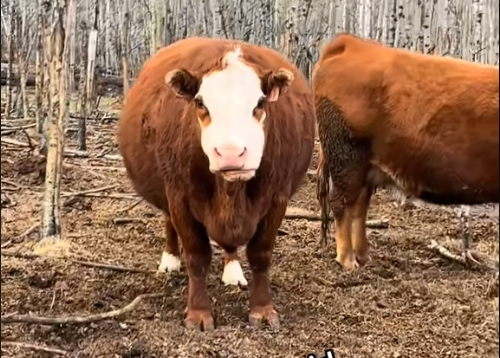As a dairy farmer or livestock specialist, understanding how climate influences the reproductive health of dairy cows is essential for maintaining high fertility rates and achieving consistent milk production. Among the many tools used in modern animal husbandry, Veterinary ultrasound has emerged as a reliable, non-invasive method for evaluating the condition of dairy cow ovaries. Especially when environmental stressors like heat and cold affect fertility, real-time ultrasound imaging allows us to observe how ovarian structures respond to these climatic challenges.

In this article, I’ll explain how veterinary ultrasound helps identify climate-related changes in dairy cow ovarian function, why this is important, and how farmers and veterinarians around the world apply this knowledge to improve herd reproduction performance.
Understanding the Link Between Climate and Reproductive Health
Climate change is increasingly recognized as a key factor in declining livestock fertility. While nutrition, genetics, and management practices certainly play major roles, environmental stress—particularly related to temperature and humidity—has been shown to disrupt estrous cycles, ovulation, and hormonal balance in dairy cows.
One of the most concerning impacts of climate stress is “silent estrus” or anestrus—a condition in which cows do not show visible signs of heat even though ovulation may or may not be occurring. Heat stress in summer and cold stress in winter both interfere with normal reproductive hormone release. Veterinary ultrasound allows farmers and veterinarians to look beyond visible signs and monitor the ovary directly for developing follicles and corpus luteum formation.
Ultrasound Imaging in Reproductive Diagnostics
Veterinary ultrasound, particularly B-mode ultrasonography, is commonly used to evaluate reproductive structures like the uterus and ovaries. A transrectal ultrasound probe inserted into the cow’s rectum offers a clear and immediate view of ovarian follicles, corpus luteum (CL), cysts, and other reproductive abnormalities.
During estrus, healthy follicles typically range from 10–20 mm in diameter, and a corpus luteum forms soon after ovulation. Ultrasound helps determine whether a cow is cycling normally, has ovulatory issues, or has entered a non-cycling state due to environmental stress.

Summer Heat Stress and Its Effect on Ovarian Function
Across the world, high temperatures have been found to disrupt reproductive efficiency in dairy cows. In countries with hot summers like the United States, Brazil, or India, farmers often report lower conception rates, longer calving intervals, and reduced estrus expression.
Scientific studies show that when ambient temperatures rise above 25°C (77°F), the likelihood of heat stress increases sharply. High-producing dairy cows are especially vulnerable, as their metabolic heat load is already elevated due to lactation. In adult cows, which bear a greater milk production burden than heifers, the risk of thermal imbalance is even higher.
Using ultrasound during summer reveals some alarming patterns: follicles often fail to mature, or ovulation is delayed or suppressed. The corpus luteum, which supports early pregnancy, may fail to form or regress prematurely. This explains why pregnancy rates during summer months often fall significantly compared to spring or fall.
Winter Cold Stress and the Hidden Energy Drain
Although heat stress receives more attention, winter cold also affects dairy reproduction—especially in regions with harsh winters like Canada, Russia, or Northern Europe. When temperatures drop below freezing, dairy cows must expend more energy to maintain their core body temperature. If their dietary intake fails to match this increased demand, energy deficits occur.
Veterinary ultrasound examinations in winter frequently reveal poor ovarian activity. Follicles may be undersized or absent, and anestrus becomes more common. This is linked to a decline in circulating glucose levels and a rise in non-esterified fatty acids (NEFA), indicating that cows are mobilizing body fat to compensate for energy loss.
If energy deficits persist, hormone synthesis—particularly GnRH, LH, and FSH—can be disrupted, suppressing follicular development and estrous behavior. Reproductive performance suffers, and extended calving intervals are common.
Scientific Insight: Metabolic Heat and Climate Thresholds
From an international research perspective, a dairy cow’s energy needs change significantly with environmental temperature shifts. Studies have shown that for each 1°C increase above the thermoneutral zone (around 20°C), cows require approximately 0.91% more maintenance energy. Similarly, when temperatures drop below 15°C, feed intake increases by up to 25%—yet energy loss through heat production can outpace gains from food.
If feed energy fails to compensate for this metabolic demand, a negative energy balance (NEB) sets in. Within just a few hours, NEB can lead to hypoglycemia, which in turn affects reproductive hormone secretion. Cows in NEB often show lower pregnancy rates, reduced uterine tone, and poor ovarian response—clear symptoms that can be identified through veterinary ultrasound.
The Global Perspective: Strategies from Around the World
In the U.S., veterinarians and herd managers rely on timed artificial insemination (TAI) protocols supported by ultrasound evaluations to overcome silent estrus during summer. Programs like Ovsynch and Presynch use hormone injections to synchronize ovulation, but success depends on knowing the ovarian status—which only ultrasound can confirm accurately.
In Israel, where summers are long and dry, many dairy farms use cooling systems combined with ultrasound monitoring to protect reproductive function. Evaporative cooling fans, shade structures, and night feeding help cows maintain core temperature, but follicular development is still routinely monitored with ultrasonography to ensure successful conception.
In Northern Europe and Canada, winter management strategies often include increasing energy density in feed rations and using veterinary ultrasound to confirm whether cows are cycling. If anovulation is detected, hormone treatments or reproductive rest periods are planned accordingly.
Real-Life Use: What Ultrasound Reveals in Seasonal Extremes
On our farm, ultrasound scans taken during summer often reveal ovarian follicles that appear normal in size but fail to rupture, resulting in persistent follicles or follicular cysts. These cows show no visible heat, yet ultrasound clearly shows signs of disrupted function. In contrast, during winter, we frequently observe ovaries with minimal or no follicular activity, even in cows that should be cycling.
We’ve learned to interpret these seasonal patterns and adjust our feeding plans, breeding schedules, and cooling/heating strategies accordingly. Veterinary ultrasound has become an indispensable tool in this process—offering real-time data we can act upon immediately.
Why Veterinary Ultrasound Matters in a Changing Climate
With climate variability intensifying worldwide, dairy farmers must adapt their reproductive management techniques. Ultrasound provides a window into how individual cows are coping physiologically with weather extremes. Its benefits include:
Early detection of anestrus or cystic ovaries
Monitoring response to synchronization treatments
Assessing energy-related reproductive disorders
Making data-driven breeding decisions based on actual ovarian status
Unlike blood tests or hormone sampling, ultrasound is immediate and visual. It empowers farmers and veterinarians to intervene before permanent fertility loss occurs, helping improve overall herd efficiency.
Conclusion
Veterinary ultrasound is more than just a diagnostic tool—it’s a decision-making ally in modern dairy reproduction management. By revealing how climate stress affects ovarian activity, it allows farmers across the globe to respond proactively to environmental challenges.
Whether facing summer heatwaves in Texas or icy winters in Alberta, farmers using ultrasound can detect reproductive setbacks early, adjust management practices accordingly, and ultimately maintain healthier, more productive herds.
As climate pressures increase, integrating veterinary ultrasound into routine fertility monitoring isn’t just beneficial—it’s essential.
tags:
Text link:https://www.bxlultrasound.com/ns/814.html


